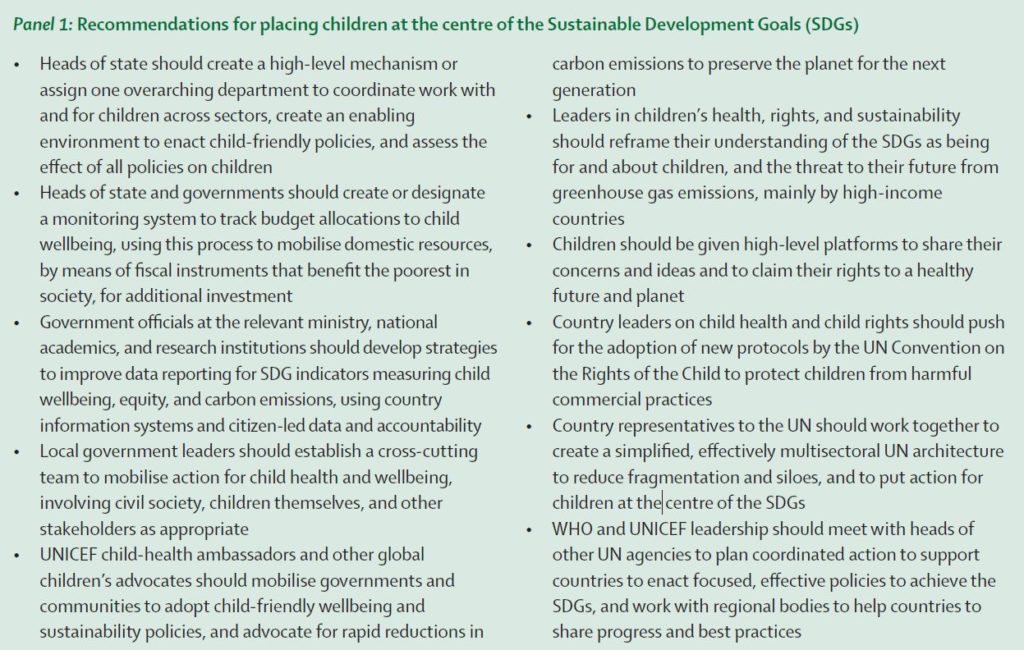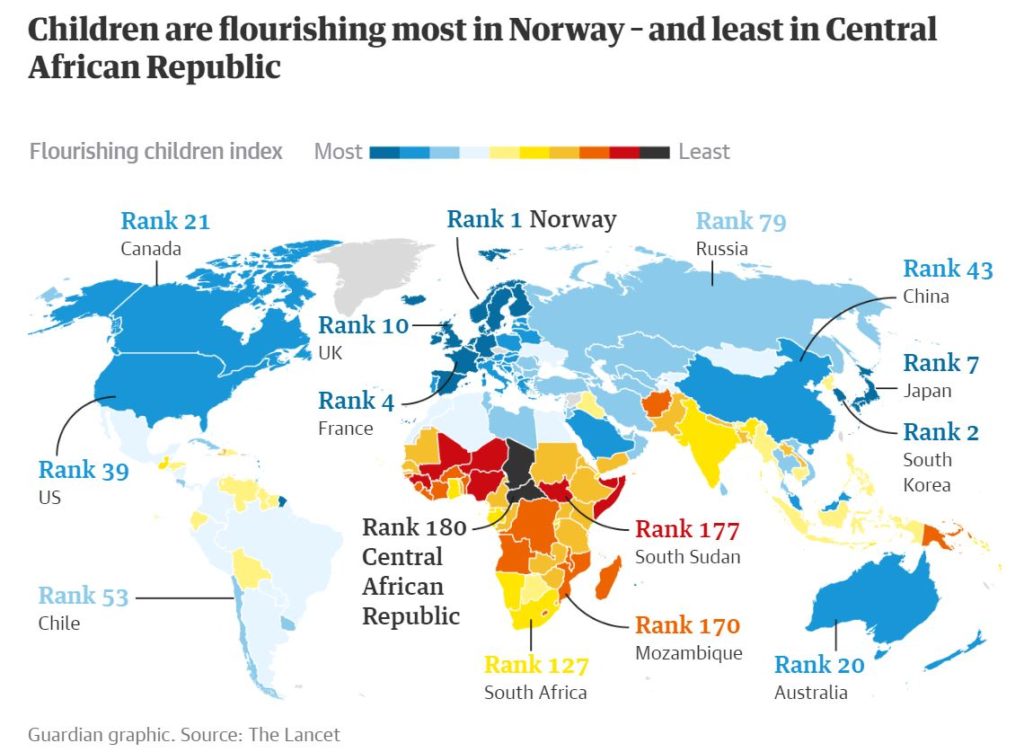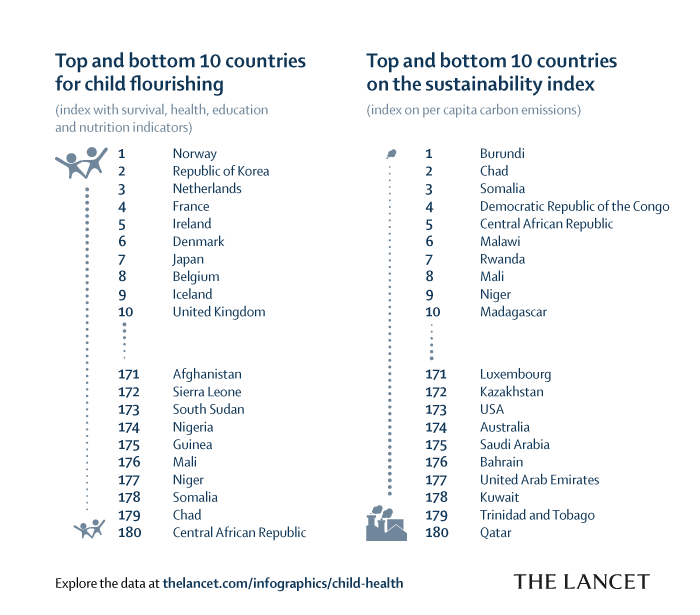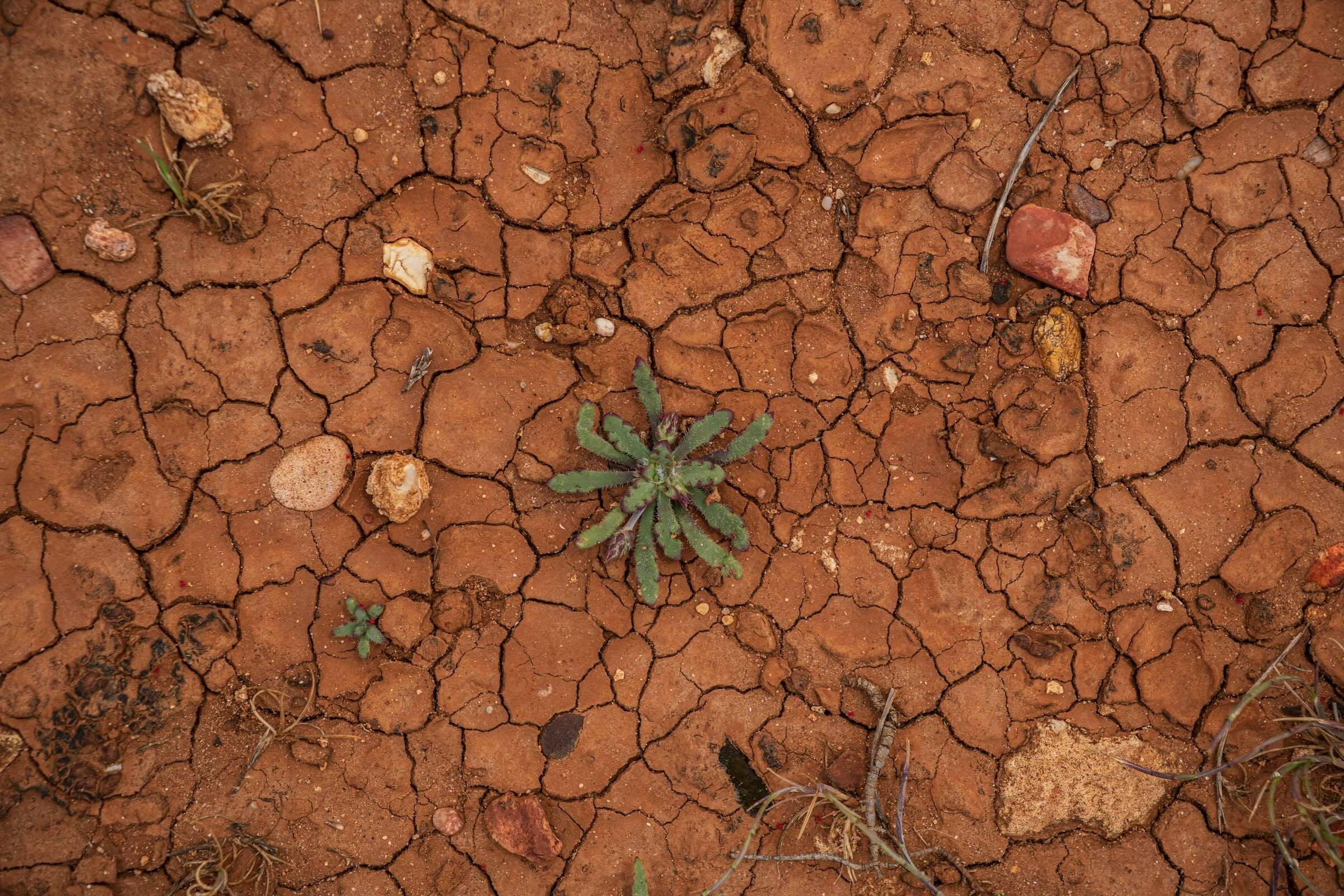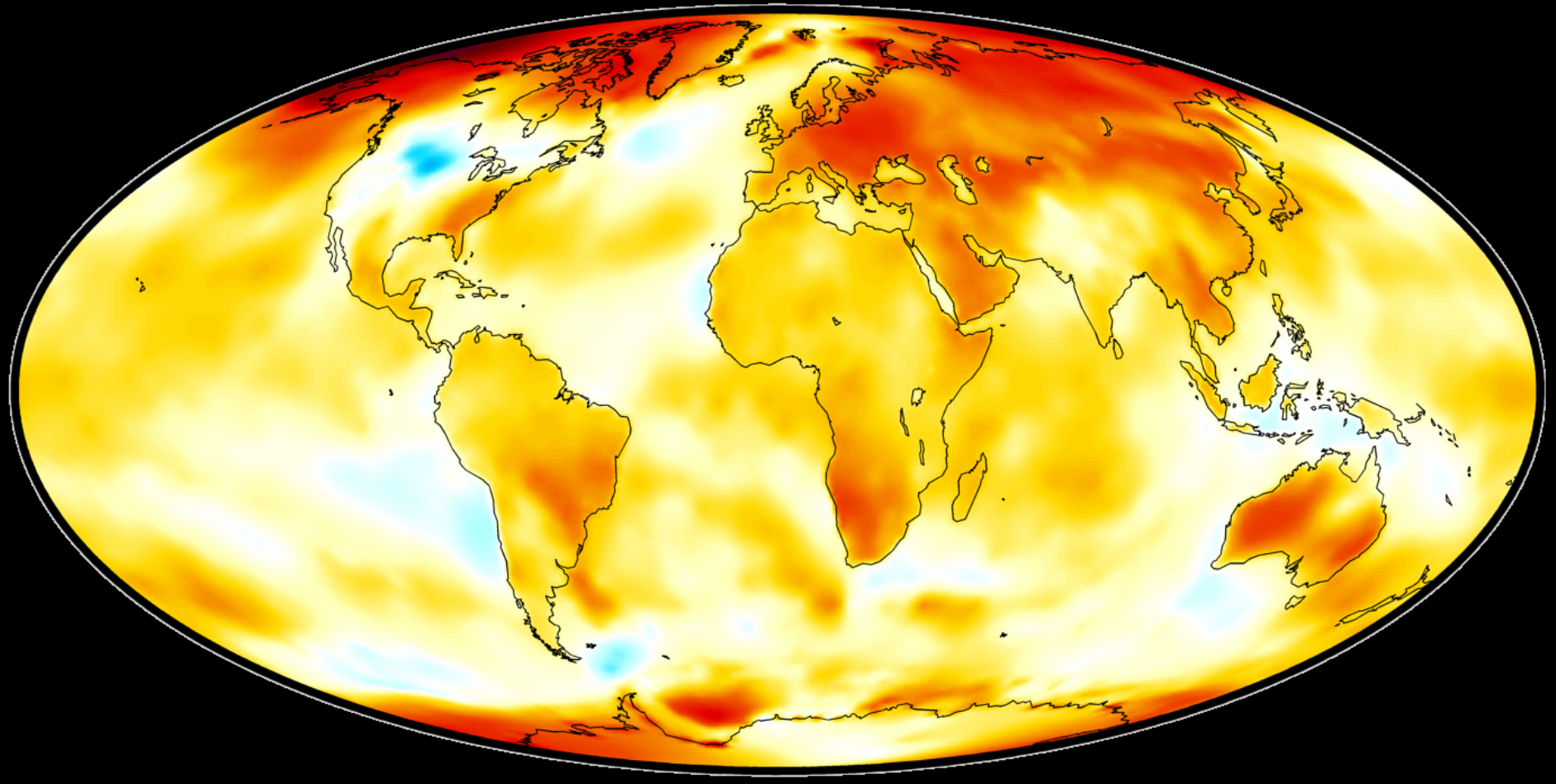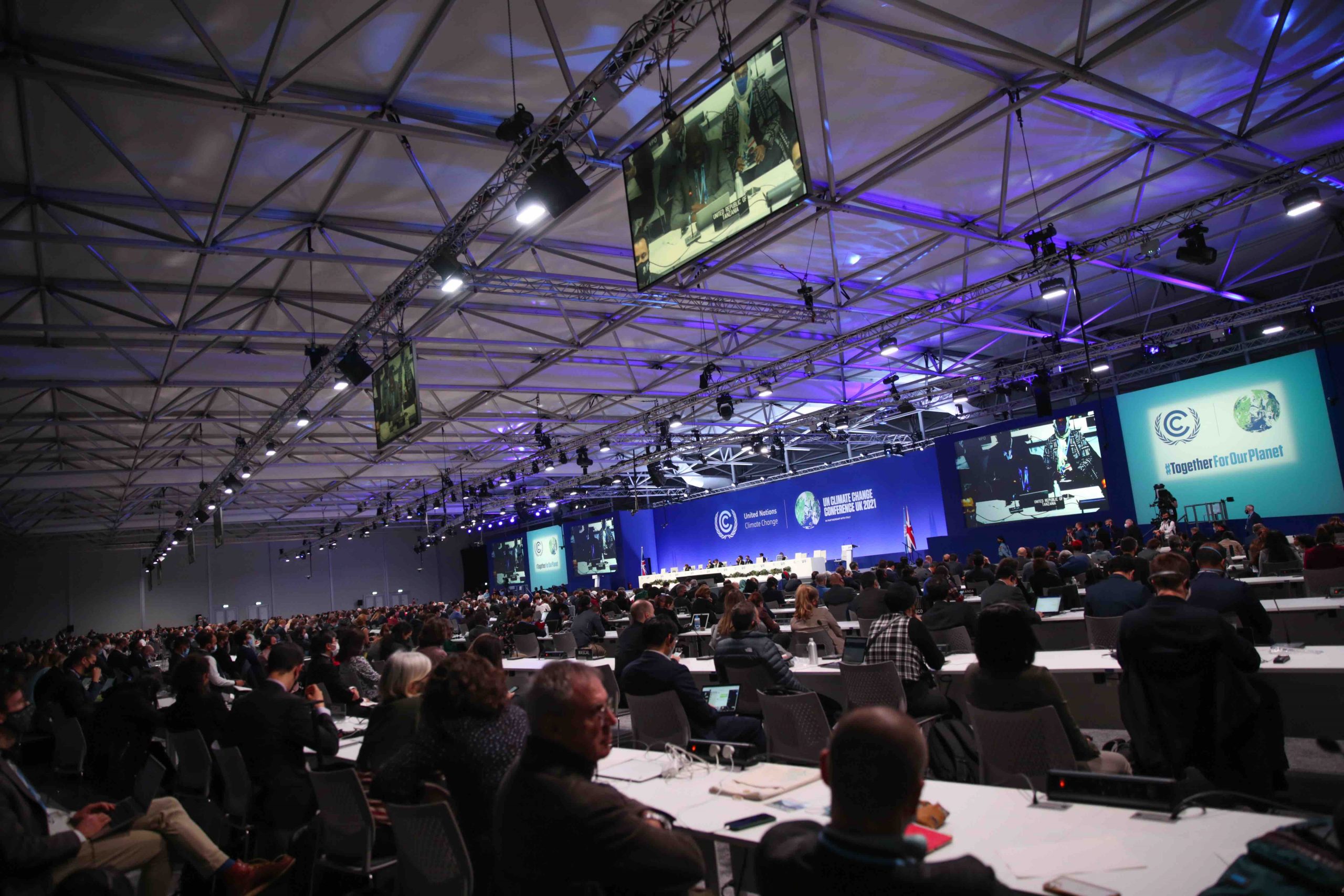Today’s children face an uncertain future. Climate change, conflicts, inequalities, and exploitative marketing practices threaten their health and wellbeing. Investing in children would bring global benefits to several societal aspects, from the economy to the environment. A recent report by the WHO, UNICEF, and The Lancet introduces a new way of ranking countries according to the emphasis they place on children’s health and environmental sustainability. In doing so they make a case for putting children at the center of the SDGs.
The 17 Sustainable Development Goals (SDGs) are at the heart of the 2030 Agenda for Sustainable Development, which aims to guarantee peace and prosperity for people and the planet, now and in the future.
When planning for the world’s future, we cannot exclude the main stakeholders. It is children, young people, and future generations that will benefit the most from the actions taken today to shape a more sustainable, healthy and equal world. They are also those who will pay the consequences of today’s inaction.
The SDGs include 44 child-related indicators integrated throughout the 17 goals and arranged into 5 dimensions of children’s rights:
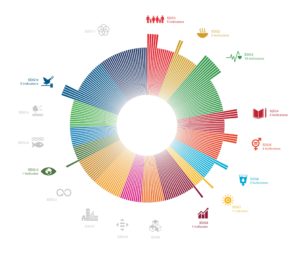
- Every child survives and thrives
- Every child learns
- Every child is protected from violence and exploitation
- Every child lives in a safe and clean environment
- Every child has a fair chance in life.
Measuring the world’s progress towards such achievements is not an easy task. On average, according to the 2019 UNICEF report Progress for Every Child in the SDG Era, three-quarter of child-related SDG indicators in every country “either have insufficient data or show insufficient progress to meet global SDG targets by 2030”. The report warns that knowledge gaps are huge and progress is too slow, resulting in many children being left behind.
We live in the era of the Sustainable Development Goals. It is about making sure that the future is taken as seriously as the present. And that is not what we are doing.
Richard Horton, Editor-in-Chief of The Lancet
A new landmark report released by a Commission of experts convened by the World Health Organization (WHO), UNICEF and The Lancet takes a further step in the direction of deepening knowledge on – and monitoring how – the world is taking care of the new generations. The report, entitled “A Future for the World’s Children?”, calls for child wellbeing to be put at the centre of SDG policies, and highlights the social, environmental and economic benefits of investing today in children’s health worldwide.
A new measure for children’s flourishing
The Commission constructed a new “child flourishing index” that includes measures of child survival and well-being, such as health, education, and nutrition. The index relies on the “Survives and Thrives” SDG indicators, which include tracking under-five mortality, malnutrition, and new HIV infections, as well as interventions such as delivery care and immunization.
180 countries were ranked according to the index. Due to data gaps and limitations, authors highlight that the index should be considered as an illustrative tool for showing how SDG indicators could be used to construct a measure of child flourishing at a national level. Nevertheless, with the available data and not surprisingly, high-income countries are at the higher end of the scale – which means that they are more effective in supporting their children in living healthy lives – whereas low-income countries such as the Central African Republic, Chad, and Somalia occupy the lower end of the scale.
Defending the present without compromising the future
“Promoting today’s national conditions for children to survive and thrive must not come at the cost of eroding future global conditions for children’s ability to flourish” affirm the authors. Ecological degradation and climate change are mentioned by the report – together with conflicts, pervasive inequalities, and exploitative marketing practices that encourage fast-food consumption and under-age drinking – among the major threats to the health and future of under 18s.

Contributing to future sustainability is a crucial dimension of the impact of each country on children’s future worldwide. This dimension was assessed by building a Sustainability Ranking, where countries are ranked according to their excess of carbon emissions compared with the 2030 target, using data from the Global Carbon Atlas.
A comparison of the two resulting rankings unveils that the high-ranking countries on the child flourishing index are near the bottom in terms of contribution to global sustainability, due to high per capita emissions. For example, Norway, South Korea, and the Netherlands – the top three countries in terms of child flourishing – have per capita emissions more than 210% higher than the sustainability target for 2030. Indeed, they rank respectively 156th, 166th, and 160th on the global sustainability list. Thus, high-income countries tend to guarantee healthier lives to their children, whilst at the same time threatening the future of every child with high per capita CO2 emissions.
Co-Benefits of placing children at the center of the SDGs
“More than 2 billion people live in countries where development is hampered by humanitarian crises, conflicts, and natural disasters, problems increasingly linked with climate change,” said Minister Awa Coll-Seck from Senegal, Co-Chair of the Commission.
A few months ago, another landmark report of the outstanding journal on medical science, “The Lancet Countdown Report 2019: Tracking Progress on Health and Climate Change”, focused on the impacts of climate change on new-borns and their healthy development. The report highlighted that action against climate change can turn into opportunities for health, in particular for children: meeting the Paris Agreement goals would bring many co-benefits thanks to a healthy lifestyle, less pollution, cleaner economies, resilient and safer living places.
No single country in the world is adequately protecting children’s health, their environment & their future.
New report from @UNICEF, @WHO and @TheLancet calls for greater investment in child health & development. https://t.co/OOZYn6OU4u #HealthForAll pic.twitter.com/1V8YJJAKSD
— United Nations (@UN) February 19, 2020
While investments in sustainability bring positive impacts on child health, investments in children’s health – as explains the report “A Future for the World’s Children?” – brings benefits that compound throughout not only a specific child’s lifetime, but also society as a whole and future generations and can be the right lever to motivate an improvement along the sustainability path.
Moreover, the report highlights the economic co-benefits deriving from placing children at the centre of the Sustainable Development Goals. “Investments in children’s health are highly cost-effective. For example, in low-income countries, every dollar invested in health can generate up to nine dollars in economic benefits – the result of averted health care costs down the road and greater employability. And these investments are not as expensive as one might think. In fact, we estimate a financing gap of just $US195 per person to achieve our child health and wellbeing targets in low-income countries. Even less in richer countries” affirmed Henrietta Fore, UNICEF Executive Director, when commenting on the report.
